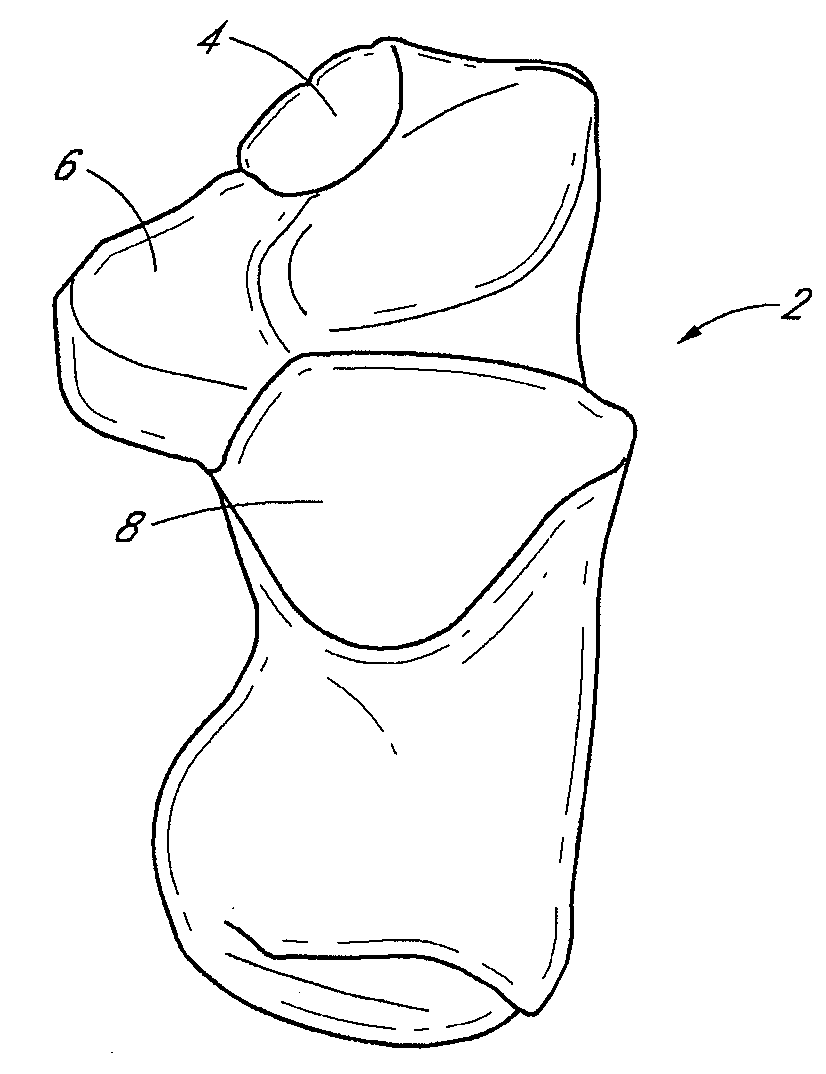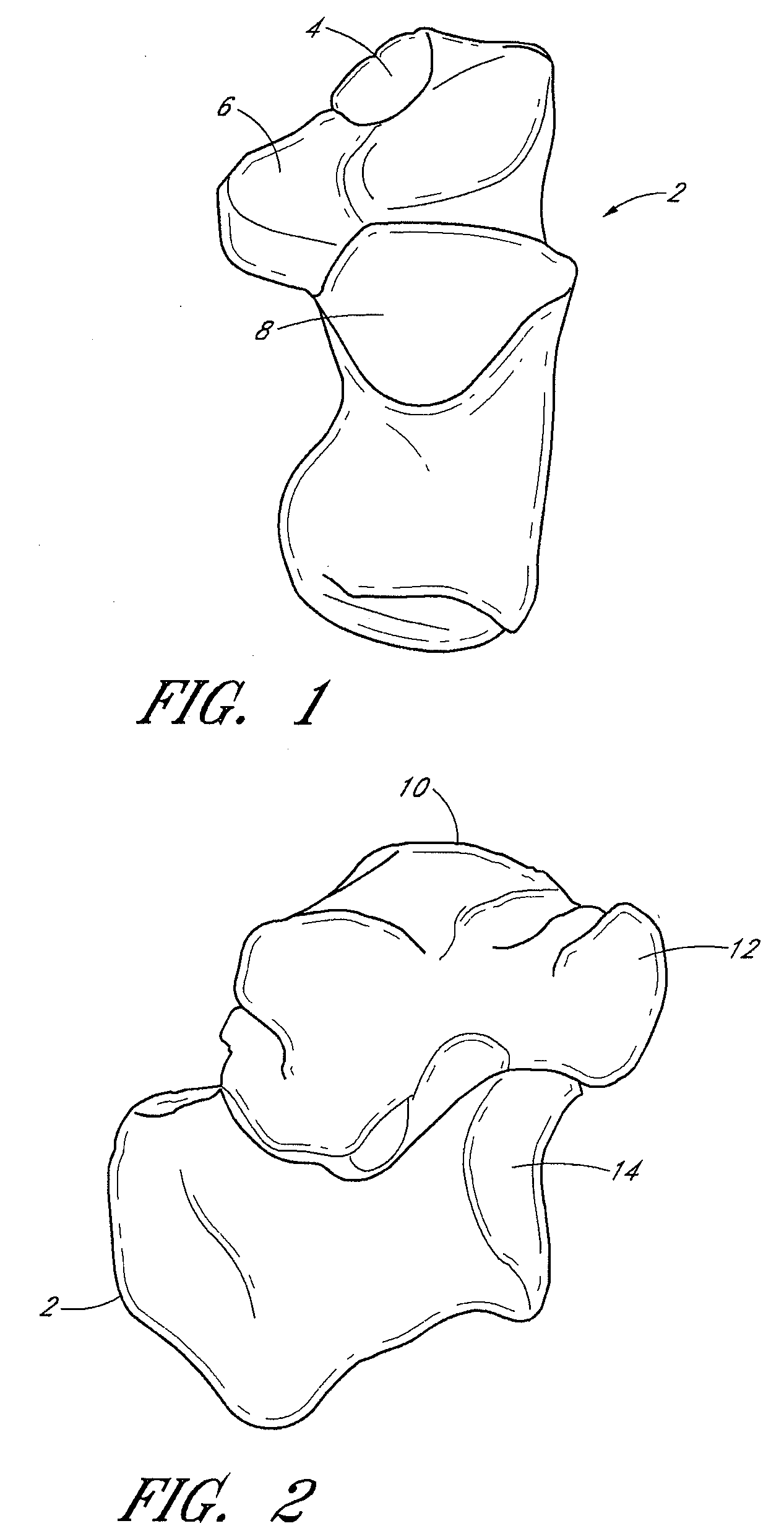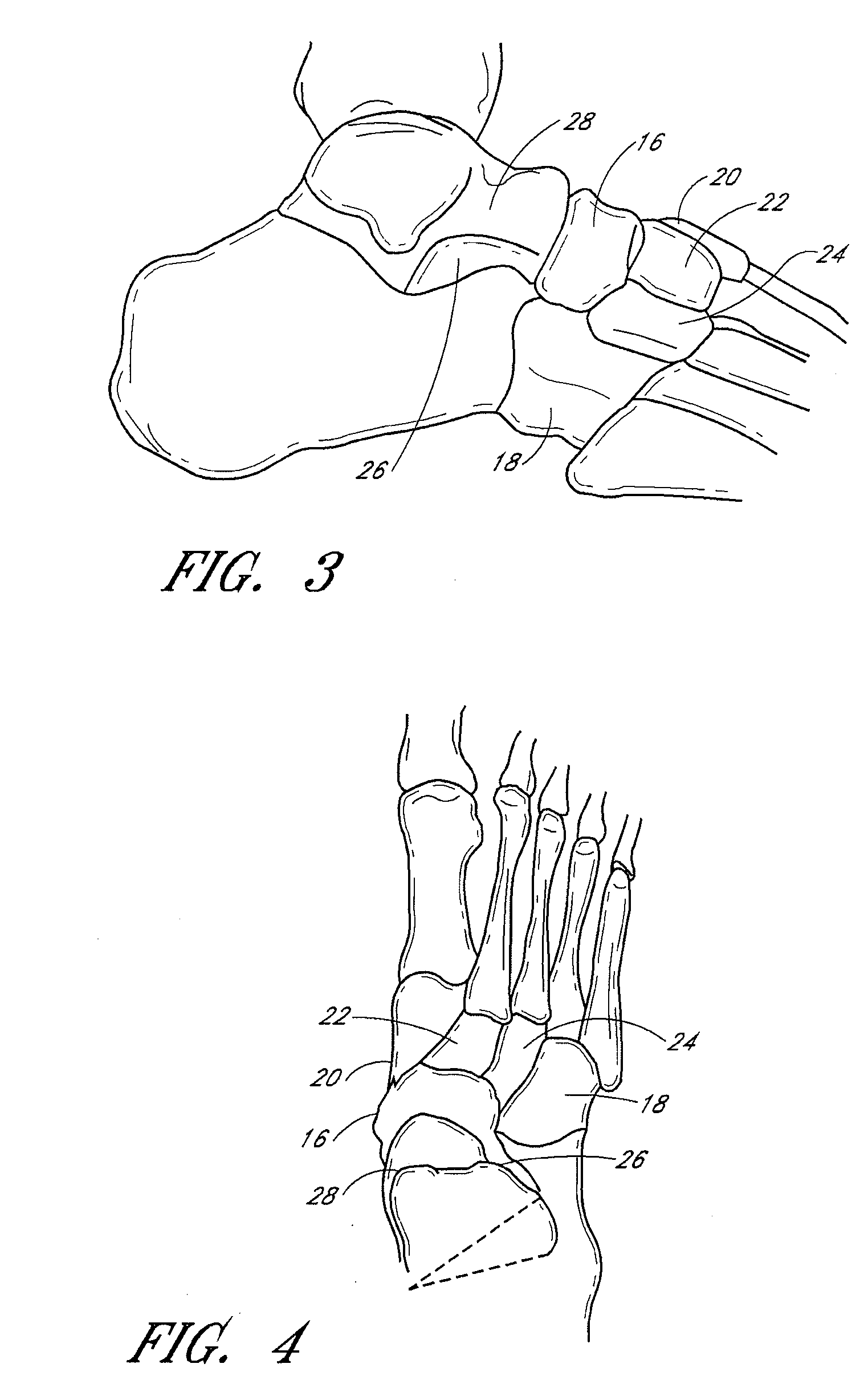Catheter deliverable foot implant and method of delivering the same
a delivery device and catheter technology, applied in the field of subtalar joint and first metatarsalphalangeal implants, can solve the problems of excessive movement in the subtalar joint of the foot, reduce the desirability of the valenti procedure and device, and achieve the effect of minimal invasiveness
- Summary
- Abstract
- Description
- Claims
- Application Information
AI Technical Summary
Benefits of technology
Problems solved by technology
Method used
Image
Examples
Embodiment Construction
[0056]The talus and calcaneus form the bones of the hindfoot. The talus is a bone with no muscular attachments, but is stabilized by ligaments and cradled by the tendons passing from the leg to the foot. As shown in FIG. 1, the calcaneus 2 articulates with the talus at the calcaneal anterior 4, middle 6 and posterior facets 8. FIG. 2 depicts the relationship between the talus 10 and calcaneus 2 and the talo-calcaneal surfaces 12, 14 that articulate with the midfoot bones. FIGS. 3 and 4 depict the midfoot bones, including the navicular 16, cuboid 18 and cuneiform bones 20, 22, 24. The sinus tarsi 26, also known as the talocalcaneal sulcus, is an extra-articular anatomic space between the inferior neck 28 of the talus 10 and the superior aspect of the distal calcaneus 2. The space continues with the tarsal canal, a funnel or trumpet-shaped space that extends medially to a small opening posterior to the sustentaculum tali. Sinus tarsi 26 is oriented obliquely from a lateral distal open...
PUM
 Login to View More
Login to View More Abstract
Description
Claims
Application Information
 Login to View More
Login to View More - R&D
- Intellectual Property
- Life Sciences
- Materials
- Tech Scout
- Unparalleled Data Quality
- Higher Quality Content
- 60% Fewer Hallucinations
Browse by: Latest US Patents, China's latest patents, Technical Efficacy Thesaurus, Application Domain, Technology Topic, Popular Technical Reports.
© 2025 PatSnap. All rights reserved.Legal|Privacy policy|Modern Slavery Act Transparency Statement|Sitemap|About US| Contact US: help@patsnap.com



